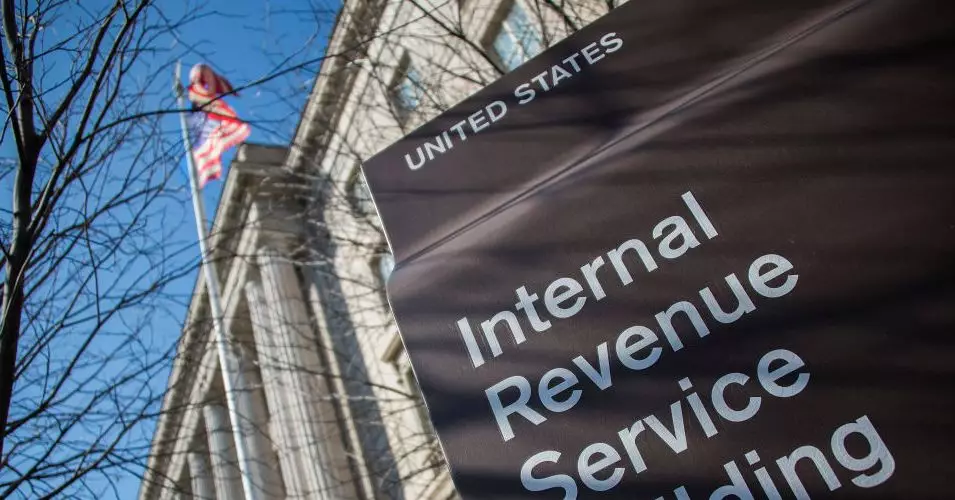In recent days, the intersection of technology and governmental inefficiency has come into sharp focus, particularly as tech luminaries like Elon Musk and Peter Thiel converge upon a bold initiative. This collaboration, spearheaded by Musk’s unconventional Department of Government Efficiency (DOGE), seeks to revolutionize access to the vast troves of data housed by the Internal Revenue Service (IRS). Central to this effort is Palantir Technologies, a company that specializes in sophisticated data analytics solutions. Their involvement signifies not merely an upgrade in database accessibility; it posits a transformative step towards what could be a fully interoperable federal data framework.
The Project: A Unified API Layer
At the heart of this collaborative undertaking is the design of a “mega API”—an application programming interface that strives to unify the myriad databases within the IRS. Such a monumental task is not just technical wizardry; it aims to create a coherent and seamless access point for both IRS employees and potentially other federal entities. The implications of this API extend far beyond efficiency; they touch on key elements of transparency and accountability in government data practices. By allowing direct access to information like taxpayer identities, social security stats, and employment records, the project raises essential questions about privacy, data security, and ethical governance.
As per insiders familiar with the initiative, the hackathon-style meeting held recently was more than just a brainstorming session. It represented an agile and fluid environment where engineers and developers from both Palantir and the IRS mingled freely, exchanging ideas and strategies in real-time to expedite this complex API’s blueprint. This innovative approach reflects a notable shift in how governmental IT solutions might evolve—an organic, iterative process that breaks away from the sluggish bureaucracy often associated with government projects.
Privacy at Stake: The Implications of a Centralized Data Structure
While the potential for improved efficiency seems enticing, it doesn’t come without serious reservations. The creation of a centralized API layer inherently places sensitive data into a single database framework. This scenario begs the question: who will have access to this centralized repository of personal and financial information? The promise of streamlined data access and enhanced cooperation among government agencies must be meticulously weighed against the potential for misuse and exploitation of sensitive taxpayer information. As this initiative develops, it calls for rigorous safeguards to assure citizens that their data integrity won’t be compromised.
The possibility that AI technologies could interface with such a rich dataset—thereby reshaping the nature of audits, taxpayer interactions, and compliance tracking—cannot be ignored. Foundry, Palantir’s flagship platform, boasts capabilities to build applications and run machine learning models on structured data. If developed with responsibility, this technology could facilitate more accurate decision-making and improve public service efficiencies. However, if mishandled, it could lead to performative or punitive measures that micro-manage citizens’ financial lives under the guise of governmental efficiency.
Impacts on Future Contracts and Government Collaboration
Palantir’s longstanding ties with governmental bodies cannot be overlooked. With billions already secured in government contracts, the company has established itself as a pivotal player in transforming how data is leveraged by federal agencies. Their CEO, Alex Karp, has articulated a vision that aligns corporate profitability with the broader interests of the nation, condensing his message into a simple truth: “Whatever is good for America will be good for Americans.”
The recent shift in personnel—former Palantir employees assuming significant roles within DOGE—suggests a melding of private sector innovation with governmental oversight. This synergy may catalyze a wave of transformation in federal infrastructure, yet it also emphasizes the necessity for checks and balances. A slew of new government initiatives powered by private tech firms could lead to enhanced efficiencies but equally heightens risks related to governance and accountability.
As the deadline for the API completion approaches, with engineers expressing confidence in their thirty-day timeline, the broader community is left to ponder the ramifications of this convergence between government authority and technological prowess. Will the merger of these two theaters yield the efficiencies it promises, or will it sow deeper concerns over privacy and ethical governance? The coming weeks will not only unveil the architectural landscape of the mega API but also test the fabric of public trust in these significant governmental undertakings.

